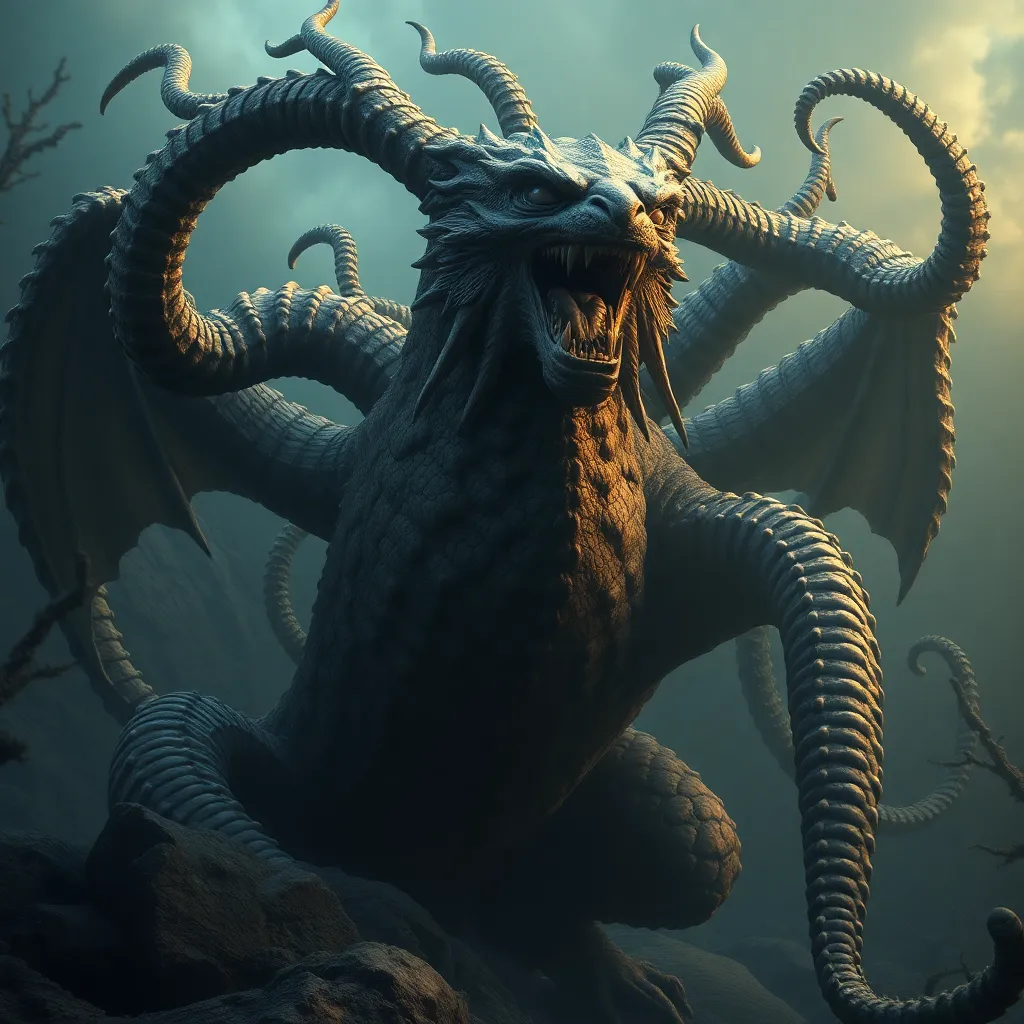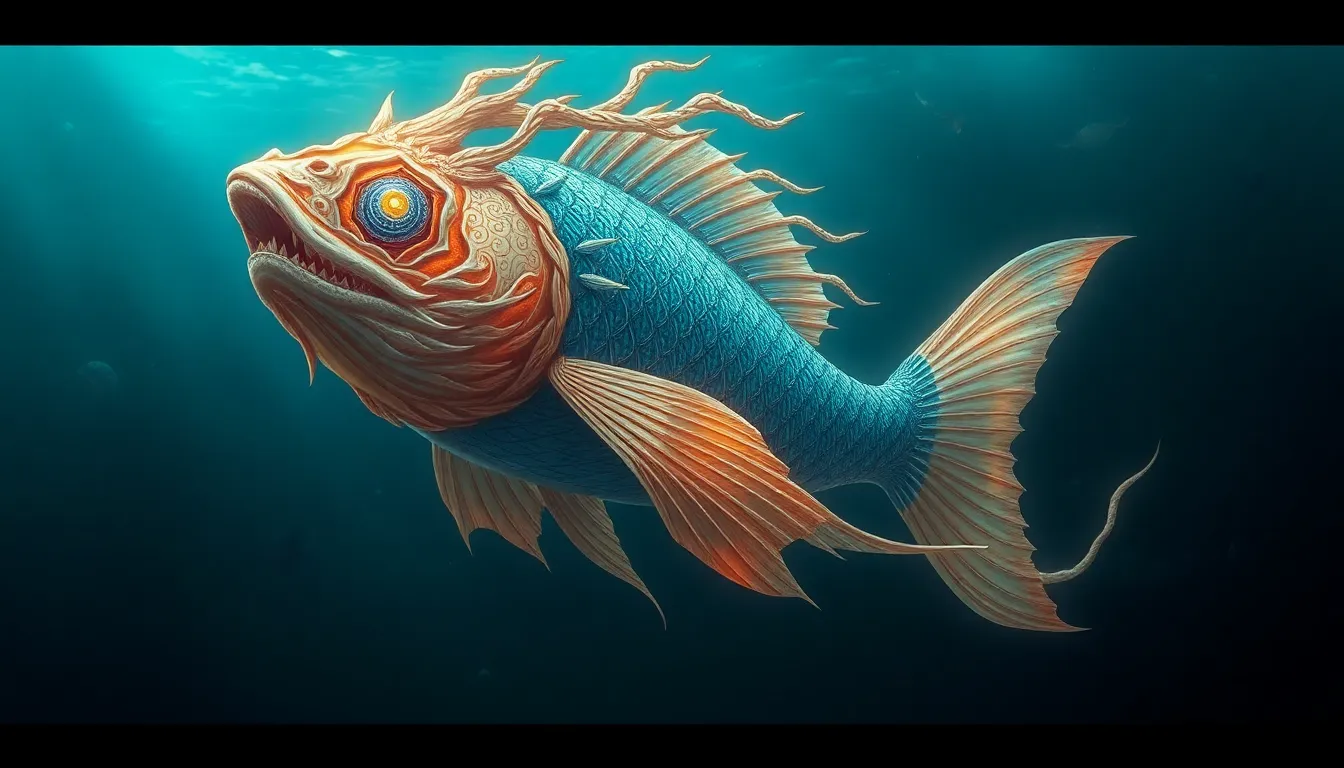The Four Tezcatlipocas: Guardians of the Cosmos
In the rich tapestry of Aztec mythology, the Tezcatlipocas hold a prominent place, representing the foundational forces of creation and the guardians of the cosmos. These four deities, known as the "Smoking Mirrors," embody the cardinal directions, each possessing distinct characteristics and powers. Their story is woven into the very fabric of the Aztec worldview, offering insights into their beliefs about the universe, the nature of humanity, and the cyclical nature of time. Understanding the Tezcatlipocas is key to unlocking the depths of Aztec cosmology and its profound influence on their culture and practices.
From Chaos to Creation: The Birth of the Tezcatlipocas
The legend of the Tezcatlipocas begins with the primordial state, Omeyocan, a realm of darkness and formlessness. In this void, existed the first deities, including the creator god Ometeotl, the dual force of creation and destruction. From Ometeotl emerged the four Tezcatlipocas, born as celestial beings radiating light and power. Their emergence brought order to the chaotic void, paving the way for the creation of the world.
Their birth is often depicted as a cosmic dance, their bodies shimmering with light, symbolizing the beginning of creation. They are seen as the forces that brought forth the elements, the sun and moon, and ultimately, life itself.
The Four Cardinal Directions and their Personifications
The Tezcatlipocas are associated with the four cardinal directions, each representing a unique aspect of the universe. These directions are not merely geographical points but embody fundamental principles that shape the world:
- North: The realm of darkness and the underworld, ruled by Tezcatlipoca, the "Smoking Mirror," a god of magic, sorcery, and the night sky.
- East: The direction of dawn and the rising sun, associated with Huitzilopochtli, the warrior god, representing the sun's journey across the sky and the battle against darkness.
- South: The realm of fertility and the earth, represented by Xipe Totec, the "Flayed God," associated with agriculture, renewal, and the cycle of life and death.
- West: The direction of the setting sun and the place of the dead, associated with Quetzalcoatl, the "Feathered Serpent," the god of knowledge, creation, and the wind.
Huitzilopochtli: The Sun God and Warrior
Huitzilopochtli, the central deity of the Aztecs, is the god of war, the sun, and the patron deity of the city of Tenochtitlan. He is depicted as a fierce warrior, adorned with feathers and obsidian ornaments, wielding a spear and symbolizing the sun's power and the struggle against darkness. His name translates to "Hummingbird of the South," referring to his swiftness and agility. Huitzilopochtli was believed to be the son of Coatlicue, the earth goddess, and the embodiment of the sun's energy. His constant battle against the forces of darkness mirrored the sun's daily journey across the sky, bringing light and vitality to the world. Huitzilopochtli's influence is reflected in Aztec warfare, ritual sacrifices, and their overall reverence for the sun.
Quetzalcoatl: The Feathered Serpent and Creator God
Quetzalcoatl, the "Feathered Serpent," is one of the most complex and revered figures in Aztec mythology. He embodies the dualistic nature of creation and destruction, representing both the wind that gives life and the serpent that consumes it. Quetzalcoatl is associated with knowledge, wisdom, and the arts, and he is often depicted as a benevolent figure, a teacher, and a bringer of civilization. His association with the wind suggests his role in the creation of breath and life. He is also credited with teaching humans the arts of agriculture, writing, and astronomy, playing a crucial role in the development and advancement of Aztec society.
Xipe Totec: The Flayed God of Renewal
Xipe Totec, the "Flayed God," is a complex and enigmatic figure in Aztec mythology. His name, which translates to "Our Lord the Flayed," refers to his iconic representation as a god with his skin flayed off, revealing the raw flesh beneath. This imagery symbolizes the cyclical nature of life and death, highlighting the Aztec belief that death is not an end but a transformation, leading to renewal and rebirth.
Xipe Totec is deeply intertwined with the earth, agriculture, and the cycle of growth and decay. He is associated with the south, the direction of the summer solstice, a period of intense heat and abundance. The flayed skin, a symbol of sacrifice and rebirth, represents the shedding of the old, the decay of the previous harvest, and the emergence of new life. The act of flaying was a significant ritual practice in Aztec culture, believed to embody the cycle of renewal and connect humans with the earth's fertile power.
Xipe Totec's role as a god of fertility and renewal is reflected in his association with maize, the staple crop of the Aztec people. He is often depicted holding a maize plant, symbolizing his role in the harvest and the nourishment of life. The flaying ceremony, a central part of Xipe Totec's rituals, involved the sacrifice of a captive warrior, whose skin would be worn by priests during the festival. This ritual, believed to appease Xipe Totec and ensure a bountiful harvest, represented the cycle of life, death, and renewal, the essence of Xipe Totec's deity.
Tezcatlipoca: The Smoking Mirror and the God of Magic
Tezcatlipoca, the "Smoking Mirror," is one of the most powerful and enigmatic figures in Aztec mythology. His name refers to his association with a obsidian mirror that reflected the smoke of his fire, representing his ability to see into the future and control fate. As the god of the north, Tezcatlipoca embodies the darkness, the night sky, and the underworld. He is also associated with war, magic, sorcery, and the irresistible forces of fate.
Tezcatlipoca's image is often depicted as a warrior adorned with obsidian ornaments, symbolizing his power and the harshness of his nature. He is often holding a smoking mirror, a symbol of his magical abilities and his role as the god of fate. Tezcatlipoca's relationship with fate and destiny is reflected in his association with the star Sirius, the "Dog Star," which was believed to influence the fate of humans. He was also believed to possess the power to manipulate the lives of humans, sending good fortune or misfortune depending on their actions and his whims.
Tezcatlipoca's role in Aztec mythology is both benevolent and malevolent, a reflection of his complex and multifaceted nature. He is seen as a powerful god with a significant influence on human life, representing the unpredictable forces of fate and the constant struggle between order and chaos.
The Tezcatlipocas and the Creation of Humanity
The Tezcatlipocas, as the forces responsible for the creation of the world, played a significant role in the emergence of humanity. Their legend illuminates the Aztec belief in the interconnectedness of gods, humans, and the universe.
According to Aztec mythology, the Tezcatlipocas created humans from maize, mirroring the Aztec belief in the importance of agriculture and the symbolic connection between humanity and the earth. However, their creation was not always successful. They initially created humans from mud, but they were weak and fragile, unable to withstand the challenges of the world. They then tried creating humans from wood, but these beings lacked intelligence and were unable to understand the gods' will.
Finally, the Tezcatlipocas created humans from maize, a substance they believed to be most worthy of the gods' creation. These humans, endowed with both physical strength and intelligence, were capable of understanding the gods' commands and fulfilling their roles in the world. This story emphasizes the Aztec belief in the interconnectedness of the human world with the divine realm and the role of the gods in shaping human destiny.
The Tezcatlipocas and the End of the World
The Aztec worldview encompassed a cyclical view of time, believing that the world would end and be reborn repeatedly, an idea reflected in the concept of the "Suns." The Tezcatlipocas played a central role in this cyclical process, representing both the forces of creation and destruction.
According to Aztec mythology, each "Sun" represented a different era in human history, each ending in a cataclysmic event. The Tezcatlipocas would then usher in a new era, restoring balance to the universe. The end of each "Sun" is often depicted as a struggle between the Tezcatlipocas, particularly between Huitzilopochtli and Tezcatlipoca, representing the conflict between order and chaos, light and darkness.
The Aztec believed that they lived in the fifth "Sun," and they anticipated its end, a time of great upheaval and destruction. They believed that the end would be triggered by an earthquake, followed by a flood that would wipe out all life on Earth. After this destruction, a new era would begin, ruled by a new sun and a new generation of humans. The Tezcatlipocas, as the forces of creation and destruction, would orchestrate this cyclical process, ensuring that the universe continues to exist.
Interpretations and Theories: A Multifaceted Mythology
The legend of the Tezcatlipocas is a rich and complex tapestry, offering insights into the core beliefs and values of the Aztec civilization. Their story embodies the cyclical nature of time, the interconnectedness of gods and humans, and the constant struggle between forces of creation and destruction.
Their multifaceted nature, both benevolent and destructive, reflects the dualistic nature of the universe. Each Tezcatlipoca represents a fundamental principle of existence, from the darkness of the night to the warmth of the sun, from the power of creation to the inevitability of death. Understanding the Tezcatlipocas is crucial to grasping the depths of Aztec cosmology, their understanding of the universe, their relationship with the divine, and their profound awe for the forces that shape the world.
The story of the Tezcatlipocas is not merely a creation myth; it is a foundational narrative that shaped the Aztecs' worldview, influenced their daily life, and guided their rituals and practices. It is a testament to the power of mythology to provide meaning, order, and understanding in a world that can seem chaotic and mysterious.
FAQ
Here are some frequently asked questions about the Tezcatlipocas:
-
What is the significance of the "Smoking Mirror"? The "Smoking Mirror" is a symbol of Tezcatlipoca's ability to see into the future and control fate. It represents his magical powers and his connection to the forces of destiny.
-
How are the Tezcatlipocas related to the Aztec calendar? The Tezcatlipocas are associated with the four cardinal directions, which are reflected in the Aztec calendar. Each direction is linked to a specific season and a particular Tezcatlipoca, highlighting their role in the cyclical nature of time.
-
What is the significance of the flayed skin in Xipe Totec's imagery? The flayed skin symbolizes the cycle of life and death, representing the shedding of the old and the emergence of new life. It highlights Xipe Totec's role as a god of fertility and renewal.
-
What is the role of the Tezcatlipocas in Aztec rituals? The Tezcatlipocas are central figures in various Aztec rituals, such as the flaying ceremony and the rituals dedicated to the sun god. They represent the forces that influence human life, and rituals were performed to appease them and gain their favor.
-
How did the Tezcatlipocas influence Aztec art and culture? The Tezcatlipocas are prominent figures in Aztec art and architecture. Their images are often depicted in sculptures, carvings, and murals, reflecting their importance in Aztec culture.




